Darts Explained for Dummies: How to Understand the Peculiarities of this Sport
Darts is a rather controversial phenomenon. The fact is that it is both an official kind of sport and the most popular game played by fat and sometimes drunk people in bars and restaurants. Nevertheless, the given kind of sport is governed by strict rules, and it is obligatory to know them to beat your friends over a glass of beer.
- Go to a bookmaker and place your bets right now.
General Rules
The British Darts Organization (BDO) is a body that develops, changes, and applies rules to the given game and its variations. When it comes to official competitions, all the players and team should abide by the BDO rules. If a player manages to win a prize, he/she must preserve it in order to return unless otherwise agreed. If a player violates any of the BDO rules, he must be disqualified for the duration of a certain tournament.
Equipment
Every player is allowed to use his own arrows that must meet the following characteristics: a length of no more than 30.5 cm and a weight of no more than 50 g. Every arrow consists of the following parts:
- Free sports predictions 24 hours a day.
- a pointed pin that is adjusted with the other end to the arrow body;
- a metal arrow body also known as a barrel;
- a flight that can also consist of three separate components.

All the boards should be made of natural hog hair or similar materials. Every board should be divided into sectors bearing the numbers from 1 to 20. In addition, there are certain sectors that are of high importance for the game. They are as follows:
- The thin inner ring is said to be the treble denoting a number should be tripled.
- The double, in its turn, is the thin outer ring denoting a number should be doubled.
- The small red circle in the very middle of the board is known as a bullseye and it is worth 50 points.
- Find out which bookmaker you can get a sign-up bonus from.
- The green circle that surrounds the bullseye can give 25 points.
Every official board should meet the following requirements:
- the inner width of double and treble rings – 8 mm;
- the bullseye inner diameter – 12.7 mm;
- the inner diameter of the ring that surrounds the bullseye – 31.8 mm;
- the distance between the bullseye center to the outer side of the double ring – 170.0 mm;
- the distance between the bullseye center to the outer side of the treble ring – 107.0 mm;
- the board overall diameter – 415 mm.
The wire that is used to limit sectors, doubles, trebles, and central circles should be firmly adjusted to the board. This wire, in general, creates the pattern of a web.
The board should be hanged so that the distance between the bullseye and the floor is 173 cm. Also, it is necessary to pay attention to the fact that number “20” should be the upper point of the board. This is required to perfectly center the board at the wall. For official competitions, it is allowed to use the boards that were previously certified by the BDO.
- We make dozens of free sports predictions every day.
A player or a captain of a team has the right to ask for the board substitute or its correction during a match if opponents agree. Any adjustments can be made either before or after a leg is played. Finally, these adjustments can be performed by an appropriate official who must serve any official event.
Throwing
A player should throw arrows from a standing position excluding situations when a physical disability or an injury makes it impossible to meet the requirement. For example, a person who constantly uses wheel-chair is understandably allowed to make throws from the chair.
- Find the best odds for sports betting.
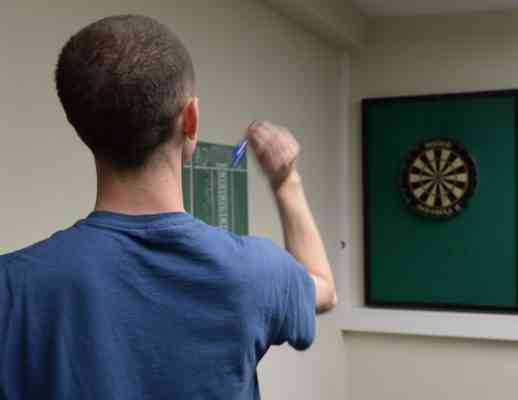
A player should take consecutive throws, one by one. Every player should perform a set of three arrows; exceptions arise when a leg, set or match can be ended in a fewer number of throws. If a player while performing a set of throws touches any of the arrows that are in the board the given set is said to be over. If an arrow touches the board and falls off it, a player is not allowed to throw it again, while the result is not credited.
Start and End
In all the competitions, every let begins with a direct start (without hitting doubles) and ends with hitting a double unless otherwise provided by the regulations of the given tournament. Hitting the bullseye stands for 50 points, and if it is enough to end a leg, set or match, this hitting is considered to be the double 25.
- New predictions for soccer, tennis, hockey, basketball, etc. are created every hour.
The game has the rule of expired points. It arises in a case when a player manages to earn more points than he needs to end a leg and so on. In this case, the extra points expire and are not moved to the next leg.
The referee’s order “Game shot” is considered to be effective only when it is announced after a player has removed all his arrows from the board. If the order is said to be invalid, a player is allowed to continue throwing in order to achieve the necessary result. Sometimes, however, it happens that the referee makes a mistake and a player removes the arrows inappropriately. In this situation, the referee should take care to place the removed arrow or arrows as close to their initial position as it is possible. After that, a leg or match can be continued.
- Take a look at the freebets offered by the bookmaker.
All the arrows that are wrongly thrown after hitting the necessary double are not credited. Here, this or that let, set or match are considered to be over only when a player hits the necessary double.

Scoring System
An arrow result is credited only when its pin is in the board in the square limited by the outer wire of the double ring. When a referee announces the result hit by the given arrow, a player can remove it from the board. The scoring system is governed by the numbers that are against the black background outside each sector. Players remover their own arrows only after the referee announces the number of scores earned and gives a permit.
- What can you bet on today? The answer is here.
Every player has the opportunity to enter a protest concerning the referee’s announcement made but it can be considered only before the arrows are removed from the board. The scoring correctness should be controlled by the referee, the player, and other officials. If it is possible, the best variant is to check the scoring correctness before every throw of an opponent. To explain, all the requests or claims concerning the scoring correctness can be initiated and checked before the opponent’s throw. There should be a separate table displaying the current score. The table should be perfectly visible for both players and the referee.
The player who is the first to reduce his score to zero by hitting a corresponding double (when there are 32 points left, a player must hit the double 16) is said to be a winner. Here, it is prohibited for the referee to give a clue to players how they can end a leg or a match. To explain, it is forbidden to announce “The double 15 left” instead of “30 left”.
- No questions? Place a bet now.
A coin toss is used to identify the order of throwing. The winner of a coin toss makes the first throw in four or three legs depending on a particular game.
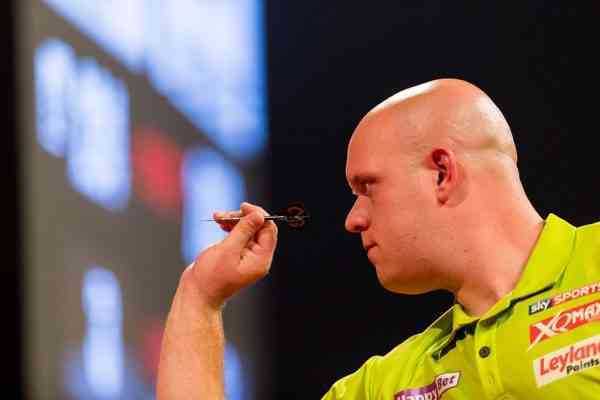
Throw Line
Actually, the throw line is not always a line itself. Very often, it can be substituted by a rectangular wooden block of 38 mm height and at least 610 mm long. This block denotes the minimal distance, from which players are allowed to perform throws. This distance should be represented by a straight line matching the back plane of the block with a perpendicular line falling from the bullseye center to the ground. In short, this distance should be 2 meters 37 centimeters. In addition, it is necessary to pay attention to the fact that the diagonal distance between the back plane of the block and thy bullseye center should be 2 meters 93 centimeters.
- Follow the link and get your prediction before the match starts.
During a match, a player is not allowed to step over the block or on it while performing a throw. The player who is going to perform a throw from outside the center of the block is also prohibited to step over the imaginary line that is the continuation of the back lane of the block.
Any player who violates one of the requirements above should be warned by the referee in the presence of the captain or the manager. If this player keeps violating the same rule or rules, all the arrows thrown from an incorrect position are not credited.
- Go to a bookmaker and place your bets right now.
Players or team captains have the right (always with the consent of the opponents) to ask for checking the block for the correctness of its dimensions and position. This claim should be issued either prior to the beginning of a leg or after its end. A corresponding official should present this demand to the referee to initiate a corresponding inspection and, if necessary, eliminate all the problems. All the adjustments should be made prior to the beginning of a leg or after its end.

Darts Variations
Depending on objectives that are placed before players, there are a few types of the given game, each of which can be more interesting and exciting in this or that situation. Below are the most requested ones among them.
- Free sports predictions 24 hours a day.
501
This is the most popular darts variation. Both teams and individual players can compete here. When it comes to individual matches, players can deal with “301”. Teams usually play “701” and “1001”. At the same time, “101” and “170” are used for players to train hitting doubles, which is necessary to win in a traditional leg. The main object of the given game is to take turns to throw 3 arrows each player to write off the points as quick as possible. A game is won by the player who manages to be the first to reach “zero”.
Points are earned when a player hits any of the sections, with doubles and trebles increasing the number of points respectively. To explain, when a player hits a double, the number of the section is then just multiplied by 2 (section 6 = 2*6 = 12). After a player has thrown three arrows, his points are summed up to be subtracted from the total points.
- Find out which bookmaker you can get a sign-up bonus from.
The given game uses the rule of ending, according to which the last throw of a leg should hit a double. For example, if 20 points left, a player must hit the 10 double. Beginners often play without that rule because it can be quite difficult to hit a double. Finally, there such a phenomenon as the excess in points. To explain, if you have 10 points left but you manage to hit 15 points, your throw is not credited and you keep playing until you hit the required section.
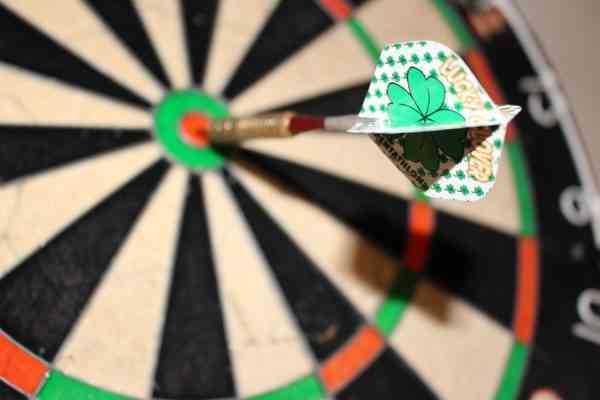
American Cricket
This variation that is suitable both for teams and individuals has come from the United States. The main objective of the game is as follows: every team or player should cover all the sections from 20 to 15 and the bullseye earning the same or a higher number of points as the opponents. A section is said to be covered when you hit it at least three times (one treble or three ordinary hits). If you hit a previously covered section, you earn a corresponding number of points.
- We make dozens of free sports predictions every day.
27
This variation is suitable for training doubles. It is even possible to play this game without an opponent. The main task is to hit all the doubles in the right order. With this, a player is given 27 points before the start.
Firstly, a player throws three arrows to hit the 1 double. Every successful throw gives him 2 points. If a player fails to hit the 1 double even once, two is subtracted from 27 points. The 2 double is the following goal. Every successful throw will then generate 4 points, while the failure to hit the 2 double at least once will be 4 points off. In such a way, a player should overcome all the doubles. On the other hand, if a player has 0 points, he loses.
- Find the best odds for sports betting.
Section 20
All the throws must reach Section 20. Opponents are not necessary for this darts variation. The main task in the given game is to earn as many points as possible over 10 sets (30 arrows). Points are generated only when an arrow reaches the required section – ordinary hit results in 1 point, hitting a double – 2, and hitting a treble – 3 points. After all the arrows have been thrown, the points are summed up to see the final result and to identify a winner, if there were at least two players.
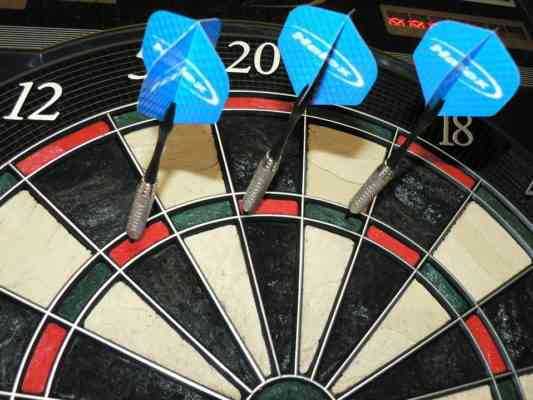
Bullseye
All the throws must hit the center of the board. Points are earned only when arrows reach either the bullseye (50 points) or the circle that surrounds it (25 points). The main task of the given game is to earn the stipulated number of points.
- New predictions for soccer, tennis, hockey, basketball, etc. are created every hour.
Double Round
The main task of the given darts variation is to hit all the doubles from 1 to 20 one after another earlier than an opponent. It is forbidden to go to the 2 double unless you hit the 1 double.
7 Lives
An unlimited number of players can compete in this darts variation. The goal is to earn more points than a previous partner managed to earn. If a player fails to earn more points (even if the number of points is the same), he loses one “life”. If he manages to succeed with the given task, he preserves his lives and the right to throw goes to the next player. When a player loses all 7 “lives”, he is said to be a loser; a win is awarded to the last player.
- Take a look at the freebets offered by the bookmaker.
Hockey
Usually, this darts variation is played between two opponents. The first player has three arrows to hit the bullseye. If he fails to do it, the right to throw goes to the second player. If the first one manages to hit the center (he gets the puck), he declares a double he is going to hit (to score goals). Then, he has three arrows to hit the required double; every successful attempt results in one point. After that, the second player takes the turn to throw the arrows. He should also hit the bullseye to get the puck and declare a double. If he fails to do it, the first player can then keep hitting the same double because he still has the puck in possession. The final task is to achieve the previously stipulated quantity of points.

Cricket
The objective of the game is to cover particular sections before an opponent and to earn more points. In this game, it is necessary to cover sections 20, 19, 18, 17, 16, 15, and the bullseye. Players take turns to throw three arrows over a single set. To cover a section, it is necessary to hit in one of the following ways:
- What can you bet on today? The answer is here.
- three ordinary hits;
- one ordinary hit and one double;
- one treble.
If a player manages to cover a section, it becomes his property. If both players manage to cover it, the section is said to be closed, and it is out of the game. In addition, there are certain requirements for the bullseye to be covered:
- three hits in the circle around the bullseye;
- one hit in the circle around the bullseye and one hit in the bullseye itself.
Around the Clock
It is one of the simplest darts variations. An unlimited number of players can participate in the given game at the same time. Every player should hit all the sections in the right order (1, 2, 3, 4, and so on, with 25 being the last target). As soon as a player makes three throws, the right to make throws goes to another one. A winner is the player who manages to be the first to hit all the numbers in the correct order.
- No questions? Place a bet now.
5 Lives
It is a simpler and faster variation of “7 lives”. It is necessary to earn more points than a previous player did. Every player has the right to miss 5 times. The sixth unsuccessful try will result in a complete failure. It is a perfect darts variation for a group of people because it is exciting and interesting. Moreover, it does not take a long period of time for you guys to identify a winner.
Diameter
Here, players choose two diametrically opposite sections and try to hit their doubles and trebles. For instance, a player can choose the following targets for himself:
- Follow the link and get your prediction before the match starts.
- 20 double;
- 20 treble;
- the bullseye;
- 3 treble;
- 3 double.
The player who manages to hit all 5 targets before the others is said to be a winner of a whole game.

Round
The game manifests itself in the necessity to hit all the sections from 1 to 20 the 20 double, the 20 treble, and the bullseye in this very order. If it happens that a player’s all three throws in a single set are successful, he keeps throwing. This game does not pay attention to doubles and trebles; they are said to be ordinary parts of sections. The game is won by the player who happens to be the first to hit the bullseye.
- Go to a bookmaker and place your bets right now.
Quick Round
The game is based on “Round” with a few adjustments. If a player happens to hit a double, he moves two sections ahead. For instance, if a player needs to hit Section 10 and he hits the 10 double, his next target is represented by Section 12. Hitting a treble will correspondingly move you three sections ahead. In this case, this darts variation can be ended quickly.
1000
The greatest interest is paid to the bullseye and the circle that surrounds it. Every player has sets with three arrows in each to earn points with only 50 and 25 points being credited. The game is won by the player who manages to be the first to earn 1000 points. It is important that the rule implies the rule of excessive points meaning that if you have earned 975 points, you have to hit the circle only to win. Depending on your darts skills, the desired limit can be 500, 1000 or even 2500 points.
- Free sports predictions 24 hours a day.
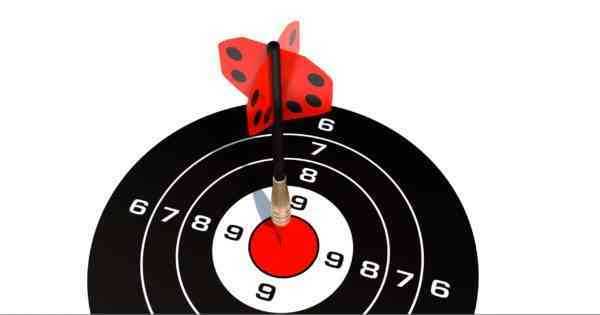
All Fives
Players are given three arrows in every set to hit the highest number divisible by 5. If a set of throws results in the number that is not divisible of five, the result is not counted. Hitting Section 5 gets 1 point, Section 10 – 2 points, Section 15 – 3 points, and so on. When a player earns 51 points, he is said to be a winner.
301 Parcheesi
Prior to beginning, every player has 0 points. They then take turns to throw three arrows over a single set. If it happens that a player gets the same or a higher number of points as one of his opponents, this opponents’ points are annulled and he should begin the game from the very beginning. The game is won by the player who is the first to earn 301 points.